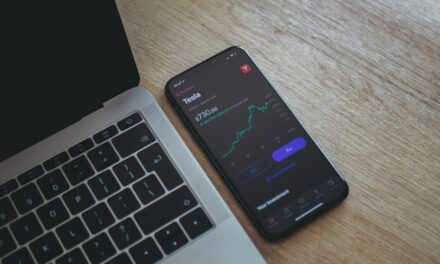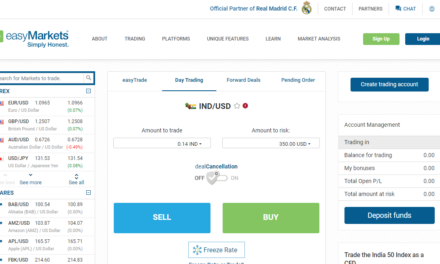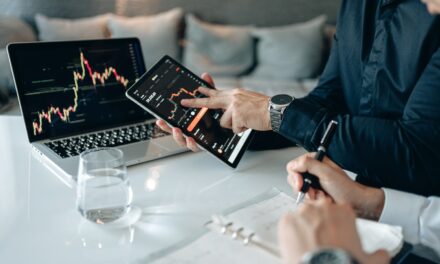Introduction
Forex trading is a great way to make a living. It offers the potential for high returns, and it can be done from anywhere in the world. With the right knowledge and tools, anyone can become a successful forex trader. In this article, we will discuss the basics of forex trading, the advantages and disadvantages of trading for a living, and the steps you need to take to become a successful forex trader. We will also provide some tips and strategies to help you get started. So, if you’re interested in learning how to trade forex for a living, read on!
The Pros and Cons of Trading Forex for a Living
Trading forex for a living can be an attractive option for those who have the necessary skills and knowledge to make a success of it. However, it is important to understand the pros and cons of this type of trading before taking the plunge.
The Pros
The main advantage of trading forex for a living is the potential for high returns. Forex markets are highly liquid and offer traders the opportunity to make large profits in a relatively short period of time. Additionally, the forex market is open 24 hours a day, five days a week, allowing traders to take advantage of market movements at any time.
Another advantage of trading forex for a living is the low cost of entry. Unlike other forms of trading, forex trading does not require a large capital investment. This makes it an attractive option for those who are just starting out in the world of trading.
The Cons
The main disadvantage of trading forex for a living is the high risk involved. Forex markets are highly volatile and can move quickly, making it difficult to predict the direction of the market. Additionally, the forex market is highly competitive and traders must be prepared to take risks in order to make a profit.
Another disadvantage of trading forex for a living is the lack of regulation. Unlike other markets, forex trading is largely unregulated, meaning that traders must be aware of the risks associated with trading in this market.
In conclusion, trading forex for a living can be a lucrative option for those who have the necessary skills and knowledge. However, it is important to understand the risks involved and to be prepared to take risks in order to make a profit.
Tips for Finding the Right Broker for Forex Trading
1. Research the Broker: Before selecting a broker, it is important to do your research. Look for reviews and ratings from other traders, and read up on the broker’s background and history. Make sure the broker is regulated and licensed by a reputable financial authority.
2. Check the Platform: Make sure the broker offers a trading platform that is easy to use and has all the features you need. Check to see if the platform is compatible with your computer and mobile device.
3. Consider the Fees: Different brokers charge different fees for their services. Compare the fees of different brokers to make sure you are getting the best deal.
4. Look for Customer Support: Make sure the broker offers customer support that is available 24/7. This will ensure that you can get help when you need it.
5. Consider the Leverage: Different brokers offer different levels of leverage. Make sure the broker you choose offers the leverage you need to trade successfully.
6. Check the Spreads: Different brokers offer different spreads. Compare the spreads of different brokers to make sure you are getting the best deal.
7. Consider the Deposit and Withdrawal Options: Make sure the broker offers deposit and withdrawal options that are convenient for you.
By following these tips, you can find the right broker for your forex trading needs.
The Benefits of Automated Trading Systems for Forex Trading
Automated trading systems, also known as algorithmic trading, are becoming increasingly popular in the Forex market. Automated trading systems are computer programs that use complex algorithms to analyze market data and execute trades automatically. These systems are designed to take the emotion out of trading and to help traders make more informed decisions.
The primary benefit of automated trading systems is that they can help traders make more consistent profits. By using an automated system, traders can eliminate the emotional and psychological aspects of trading that can lead to poor decision-making. Automated trading systems can also help traders to identify and capitalize on market opportunities more quickly than manual trading.
Another benefit of automated trading systems is that they can help traders to reduce their risk. Automated trading systems can be programmed to follow predetermined risk management rules, such as stop-loss orders and position sizing. This can help traders to limit their losses and protect their capital.
In addition, automated trading systems can help traders to save time. By automating the trading process, traders can free up their time to focus on other aspects of their trading strategy. Automated trading systems can also help traders to diversify their portfolios by trading multiple markets simultaneously.
Finally, automated trading systems can help traders to reduce their trading costs. By eliminating the need for manual trading, traders can save on transaction costs and commissions.
In conclusion, automated trading systems offer a number of benefits for Forex traders. Automated trading systems can help traders to make more consistent profits, reduce their risk, save time, and reduce their trading costs.
How to Develop a Trading Plan for Forex Trading
Developing a trading plan for Forex trading is an important step in becoming a successful trader. A trading plan should include a set of rules and guidelines that will help you make informed decisions when trading. Here are some key elements to consider when creating a trading plan:
1. Risk Management: Risk management is an essential part of any trading plan. You should set the maximum amount of capital you are willing to risk on each trade and determine the amount of leverage you are comfortable with. Additionally, you should set a stop-loss order to limit your losses if the market moves against you.
2. Trading Strategy: You should develop a trading strategy that fits your risk tolerance and trading style. This should include the type of currency pairs you will trade, the time frame you will use, and the entry and exit points you will use.
3. Money Management: Money management is an important part of any trading plan. You should determine how much capital you are willing to allocate to each trade and how much you are willing to risk on each trade. Additionally, you should set a maximum drawdown limit to protect your capital.
4. Record Keeping: Keeping a record of your trades is an important part of any trading plan. You should keep track of your wins and losses, as well as the reasons for your decisions. This will help you identify patterns in your trading and make adjustments to your strategy as needed.
By following these steps, you can create a trading plan that will help you become a successful Forex trader. A trading plan should be tailored to your individual needs and should be regularly reviewed and updated as needed.
How to Create a Sustainable Income from Forex Trading
Creating a sustainable income from forex trading requires a combination of knowledge, discipline, and dedication. It is important to understand the basics of the forex market and the different strategies available to traders. Additionally, it is essential to develop a trading plan and stick to it.
The first step to creating a sustainable income from forex trading is to gain a thorough understanding of the market. This includes learning about the different currency pairs, the factors that influence their prices, and the different trading strategies available. It is also important to understand the risks associated with trading and how to manage them.
Once a trader has a good understanding of the market, they should develop a trading plan. This plan should include the strategies they will use, the risk management techniques they will employ, and the goals they want to achieve. It is important to stick to the plan and not deviate from it.
The next step is to practice trading in a demo account. This will allow traders to gain experience without risking real money. It is important to practice trading with different strategies and risk management techniques to find the ones that work best for them.
Once a trader is comfortable with their trading plan and strategies, they can start trading with real money. It is important to start with small amounts and gradually increase the size of the trades as the trader gains more experience. It is also important to use risk management techniques to ensure that losses are kept to a minimum.
Finally, it is important to stay disciplined and dedicated to the trading plan. This means sticking to the plan and not deviating from it. It also means taking the time to analyze the market and adjust the plan as needed.
Creating a sustainable income from forex trading requires knowledge, discipline, and dedication. It is important to understand the basics of the market, develop a trading plan, practice trading in a demo account, and stay disciplined and dedicated to the plan. With the right approach, traders can create a sustainable income from forex trading.
Strategies for Managing Risk When Trading Forex for a Living
1. Start Small: When trading Forex for a living, it is important to start small and build up your account gradually. This will help you to manage risk and ensure that you are not taking on too much risk at once.
2. Use Stop Losses: Stop losses are an important tool for managing risk when trading Forex for a living. They help to limit your losses and protect your capital.
3. Use Leverage Wisely: Leverage can be a powerful tool when trading Forex for a living, but it can also be dangerous if used incorrectly. It is important to use leverage wisely and to understand the risks associated with it.
4. Diversify Your Portfolio: Diversifying your portfolio is an important risk management strategy when trading Forex for a living. This means investing in different currencies, markets, and instruments.
5. Manage Your Risk/Reward Ratio: The risk/reward ratio is an important concept when trading Forex for a living. It is important to ensure that your risk/reward ratio is in line with your risk tolerance and goals.
6. Monitor Your Trades: Monitoring your trades is an important part of managing risk when trading Forex for a living. This means keeping an eye on the markets and making sure that your trades are performing as expected.
7. Use Risk Management Tools: There are a number of risk management tools available to help you manage risk when trading Forex for a living. These include stop losses, trailing stops, and position sizing.
8. Have a Trading Plan: Having a trading plan is essential when trading Forex for a living. This should include your risk management strategy, entry and exit points, and your overall trading strategy.
9. Take Breaks: Taking regular breaks is important when trading Forex for a living. This will help to ensure that you are not taking on too much risk and that you are making informed decisions.
10. Have a Backup Plan: Having a backup plan is essential when trading Forex for a living. This should include an emergency fund and a plan for what to do if your trades don’t go as expected.
Conclusion
In conclusion, Forex trading for a living is a viable option for those who are willing to put in the time and effort to learn the ins and outs of the market. It requires dedication, discipline, and a strong understanding of the market. With the right tools and strategies, it is possible to make a living from Forex trading. However, it is important to remember that trading carries a high degree of risk and it is important to understand the risks before investing.






